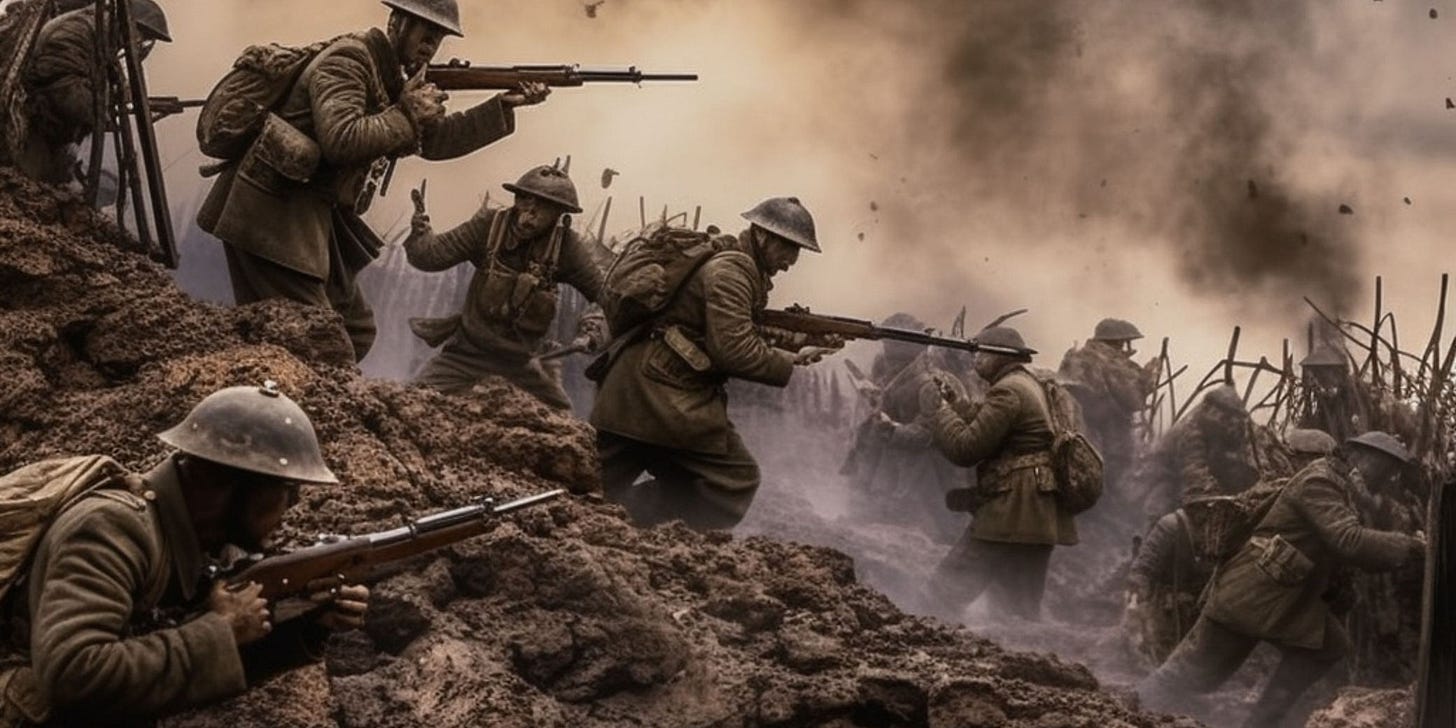The Defining Conflict of World War I - Battle of the Somme
The Battle of the Somme fought between July 1st and November 18th 1916, remains one of the most significant and devastating battles of World War I. Taking place on the Western Front near the Somme River in northern France, this conflict marked a turning point in the war and highlighted the brutal realities of modern industrialized warfare. The battle was a joint operation between British and French forces against the German Empire, designed to relieve pressure on the French army at Verdun and break through German lines.
By 1916 the Western Front had become a seemingly impenetrable network of trenches, stretching from the North Sea to Switzerland. The war had devolved into a stalemate, with both sides suffering massive casualties for minimal territorial gains. The Allies planned the Somme offensive to achieve a breakthrough that could shift the balance of the war. The initial plan, devised by British General Sir Douglas Haig, called for a massive artillery bombardment to destroy German defenses, followed by an infantry advance.
In preparation for the offensive, over 1.5 million shells were fired over a week-long bombardment. The objective was to obliterate German trenches, barbed wire, and artillery positions, clearing the way for Allied troops to advance unimpeded. However, the bombardment’s effectiveness was overestimated, as many German defenses remained intact, and the deeply entrenched troops were prepared for the assault.
On July 1, 1916, the Battle of the Somme began with a massive infantry assault. British and French soldiers emerged from their trenches and advanced across no man's land, expecting minimal resistance. Instead, they were met with a devastating hail of German machine-gun fire and artillery.
The first day of the battle became the bloodiest in British military history, with over 57,000 British casualties, including 19,000 dead. Despite the catastrophic losses, the Allies managed to capture some German positions, but the gains were minimal. The devastating toll shocked the British public and underscored the harsh realities of trench warfare.
After the initial assault, the battle devolved into a prolonged war of attrition. The Allies launched repeated offensives, attempting to break through German lines, while the Germans mounted counterattacks to regain lost ground. The fighting was characterized by relentless artillery barrages, close-quarters combat, and the constant struggle to gain a few yards of territory.
New technologies and tactics were employed during the battle, including the first use of tanks by the British. On September 15, 1916, during the Battle of Flers-Courcelette, the Mark I tank made its debut. While mechanically unreliable and slow, these early tanks provided a psychological shock to the German forces and hinted at the future potential of armored warfare.
Airpower also played a significant role, with reconnaissance planes and bombers used to gather intelligence and attack enemy positions. The skies above the Somme became a new theater of conflict, as both sides sought to gain aerial supremacy.
By the time the battle ended in November 1916, the Allies had advanced approximately six miles. The cost of this limited territorial gain was staggering. The British suffered over 420,000 casualties, the French approximately 200,000, and the Germans around 500,000. The total number of dead, wounded, and missing exceeded one million, making the Battle of the Somme one of the bloodiest battles in human history.
The battle’s human toll was compounded by the horrific conditions soldiers faced. Mud, rain, and the constant threat of shellfire turned the battlefield into a hellscape. Trench foot, disease, and the psychological trauma of constant bombardment added to the suffering of those who fought.
The battle also had significant consequences. The heavy losses inflicted on the German army weakened their capacity to launch future offensives and contributed to the eventual Allied victory. The introduction of new technologies, such as tanks and coordinated airpower, marked the beginning of a shift in military tactics that would shape future conflicts.




